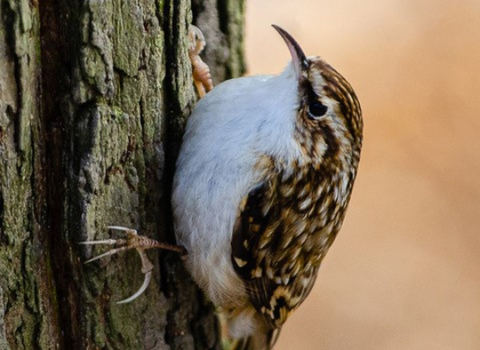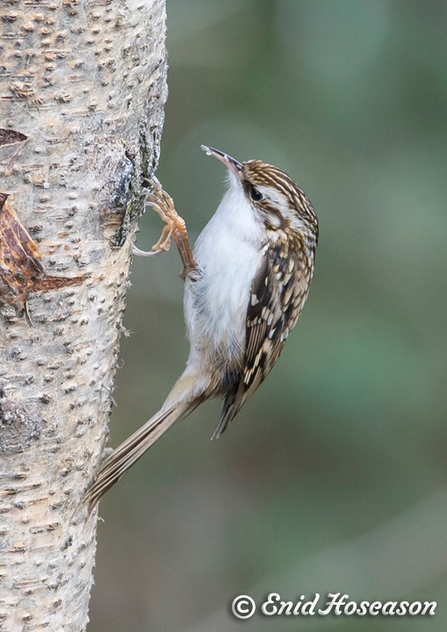
Treecreeper (c) Bob Robson
Treecreeper
Our treecreeper, Certhia familiaris also known as the Eurasian treecreeper is one of seven treecreeper species in the genus Certhia found in Europe and Asia with another species found in America.
The other species occasionally found in the UK and breeding on the channel islands is the short toed treecreeper. In Germany the short toed treecreeper is known as the garden treecreeper and is found in broad-leaved woodland. Where the two species overlap in Germany the Eurasian treecreeper is restricted to more upland areas and coniferous woodland. It is believed that the Eurasian treecreeper made it to the UK but the short toed didn’t because when Britain was joined to the continent broad leaved trees had not yet colonised.
Treecreepers, like woodpeckers and nuthatches, are adapted to run along trees collecting food, insects, spiders and nuts. Unlike woodpeckers and nuthatches, however, treecreepers can go up but not down. Woodpeckers, owls, parrots and nuthatches all have zygodactyl toes, that is, two toes forwards and two back. This enables them to go up and down trees. Treecreepers on the other hand have three toes forwards and one back which makes them suited to going up but not down.

Treecreeper (c) Enid Hoseason
Unlike many other woodland birds treecreepers do not nest in holes but seem to prefer to nest in cracks in trees or behind flaps of loose bark. They gather material including moss, sticks, grass, feathers and wool to make a small nest where they lay 5-6 eggs. Nests typically have a seperate entrance and exit hole and being quite small can become rather cramped before fledging.
Treecreepers are quite sedentary birds, not migrating though perhaps moving to slightly warmer, lower altitudes in upland areas. Treecreepers can be seen all year round at Low Barns though their mottled brown plumage means they are well camouflaged and can be hard to spot. Try sitting in the west hide and watching some of the mature alder trees beside the bird feeders. Here seeds and fat have been pushed into the cracks in the bark to feed tits, nuthatches and woodpeckers. You don't tend to see treecreepers on bird feeders but they will run up trees where they feel more at home. You could try this feeding method at home if you have a few trees and would like to attract them to your garden.
